Predictable trading patterns on Kraken
Signs of fraudulent market activity reporting on Poloniex
BCH trading volumes on Binance US do not conform to expected distribution patterns
Abnormal trade patterns on HitBTC
Suspicious rounded trades on Huobi
Predictable trading patterns on Kraken
Kraken’s BTC-USD perpetual swap trading has noticeable automated activity. Both minute- and second- time of trade distributions show trade count spikes in predictable intervals.
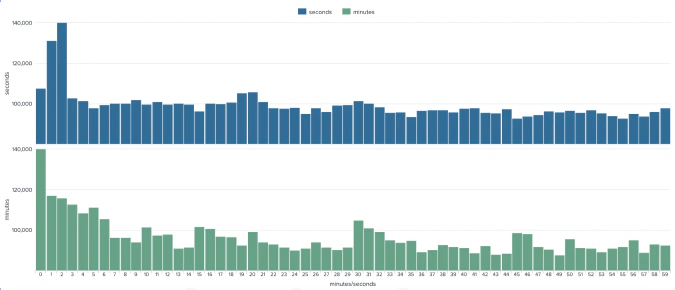
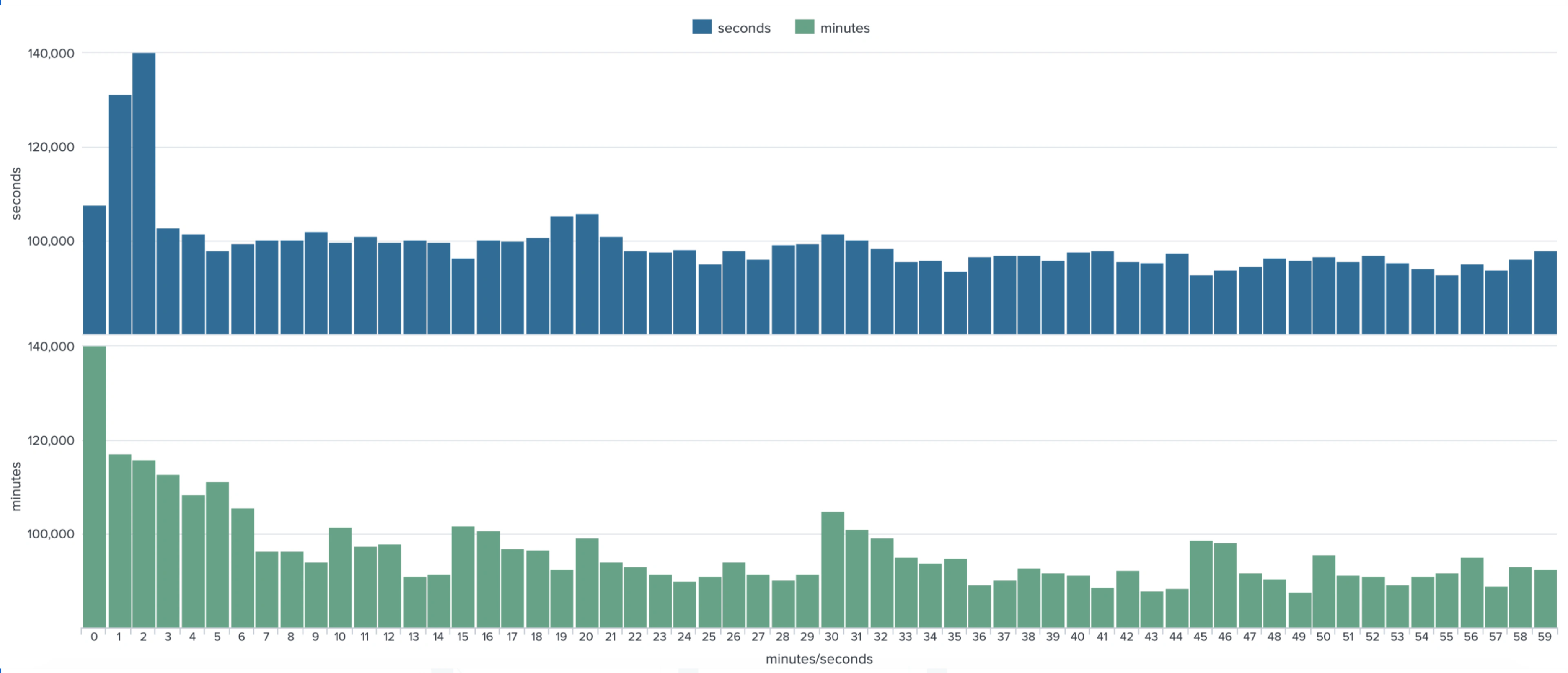
Signs of fraudulent market activity reporting on Poloniex
Trades on the DASH/USDT spot market have signs of falsified numbers. Overuse of 3s as the first digit has been observed on Poloniex. Below are distributions of leading, second, and third digits in trade sizes as compared to Benford’s law expected distributions.


According to ACFE documentation for fraud examiners, “Fraud examiners are concerned with the over-usage of digits, because fraudsters, when inventing numbers, tend to overuse certain digit patterns. The digits that occur fewer times than Benford Law predicted result primarily from the over usage of 3.”
BCH trading volumes on Binance US do not conform to expected distribution patterns
Raw trade-size distribution analysis of 3 exchanges showed significant deviations of Binance US published trade volumes from the expected power-law distribution.
Typically, frequency distributions for logged trade volumes have a near linear relationship with a negative slope, and a long tail (at the high end of trade size). As an example, in comparing BCH trading activity, the distribution on Binance US stands out when compared to Binance and Huobi.
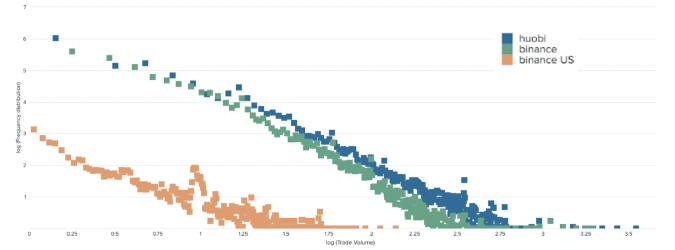
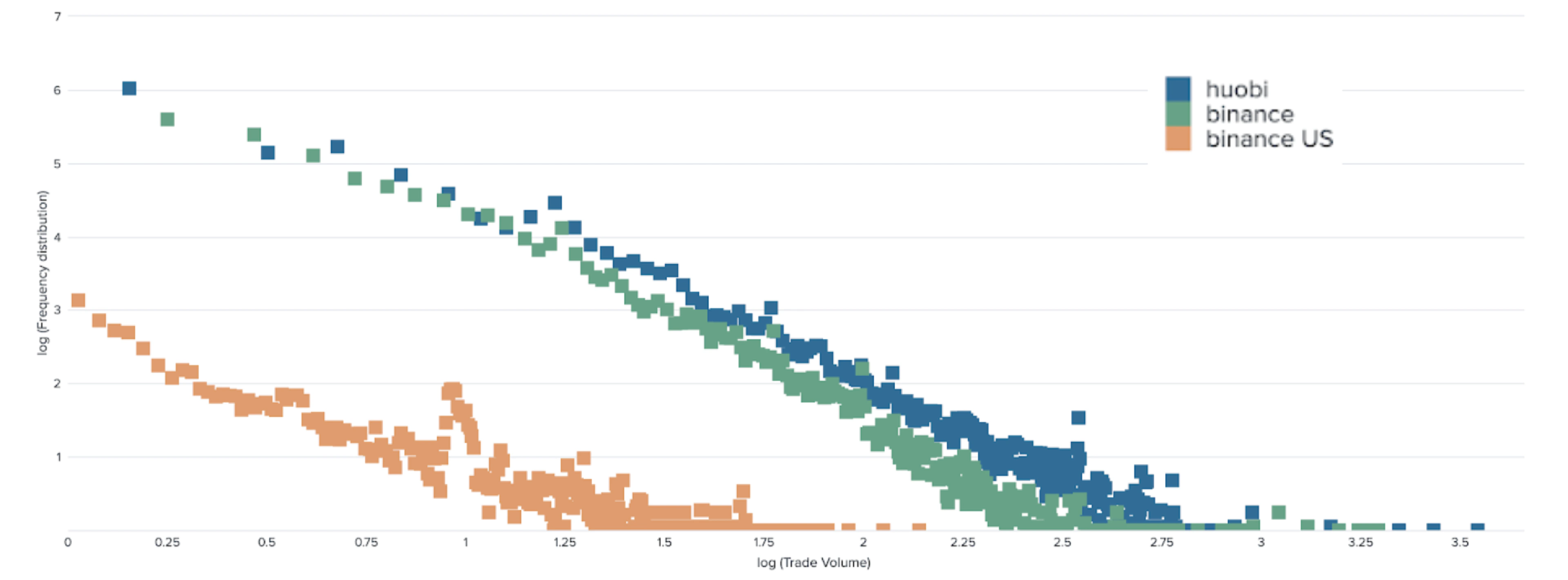
Abnormal trade patterns on HitBTC
Abnormal trade patterns on HitBTC are a seemingly regular occurrence, and the exchange frequently reports trading patterns that are distinct from other market venues. For several months, 0.4 ETH trades on the ETH–USDT spot market are strong on HitBTC.

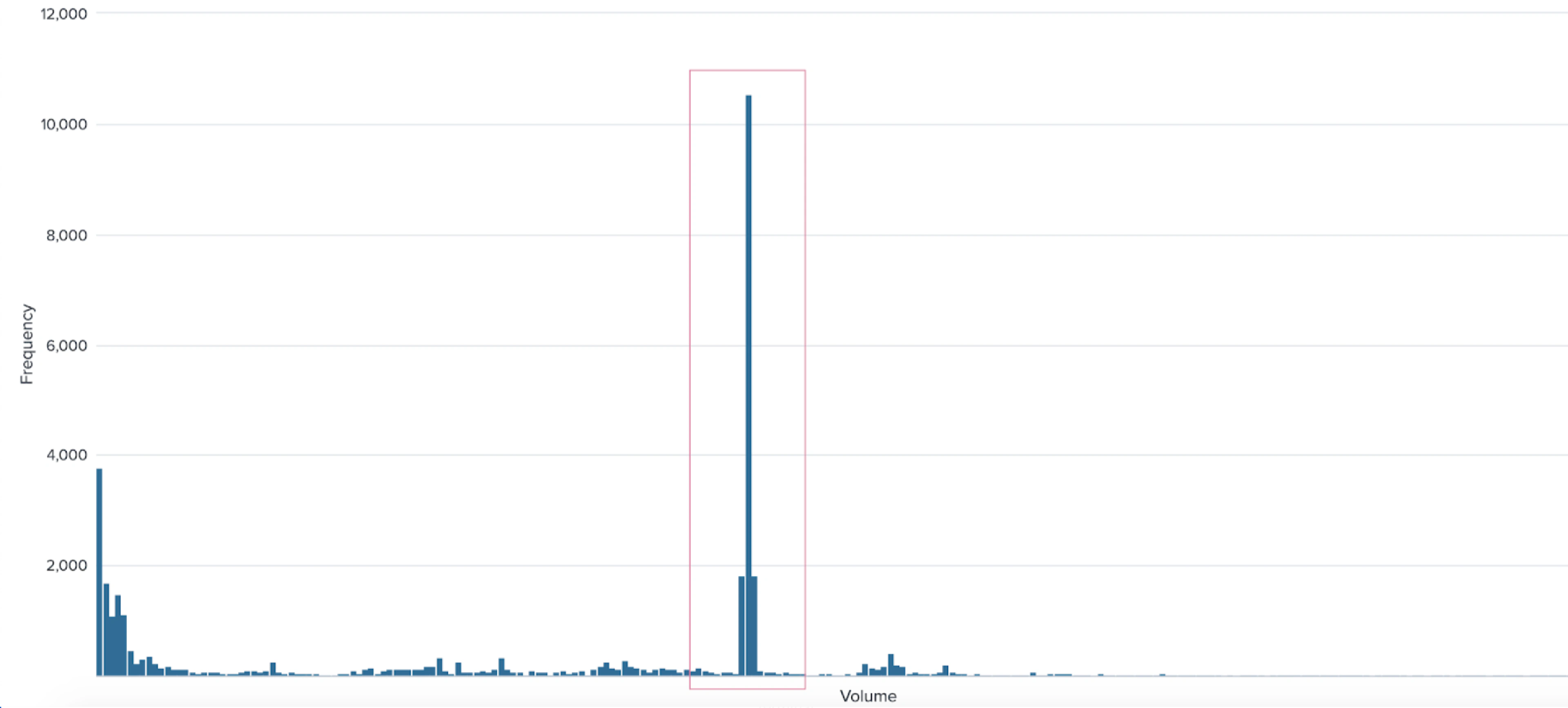
At the time of our analysis of trading volumes, 0.4 ETH was not equivalent at the exchange rate to any round number that would be convenient to deposit and trade. This alone makes human factors unlikely to be the reason for the outstanding spike.
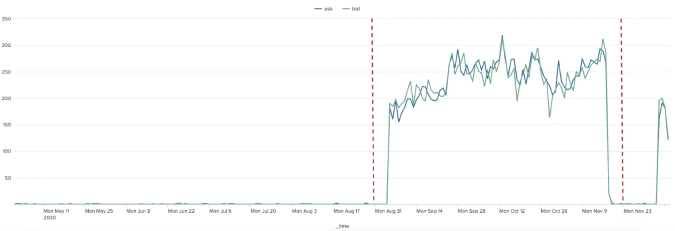
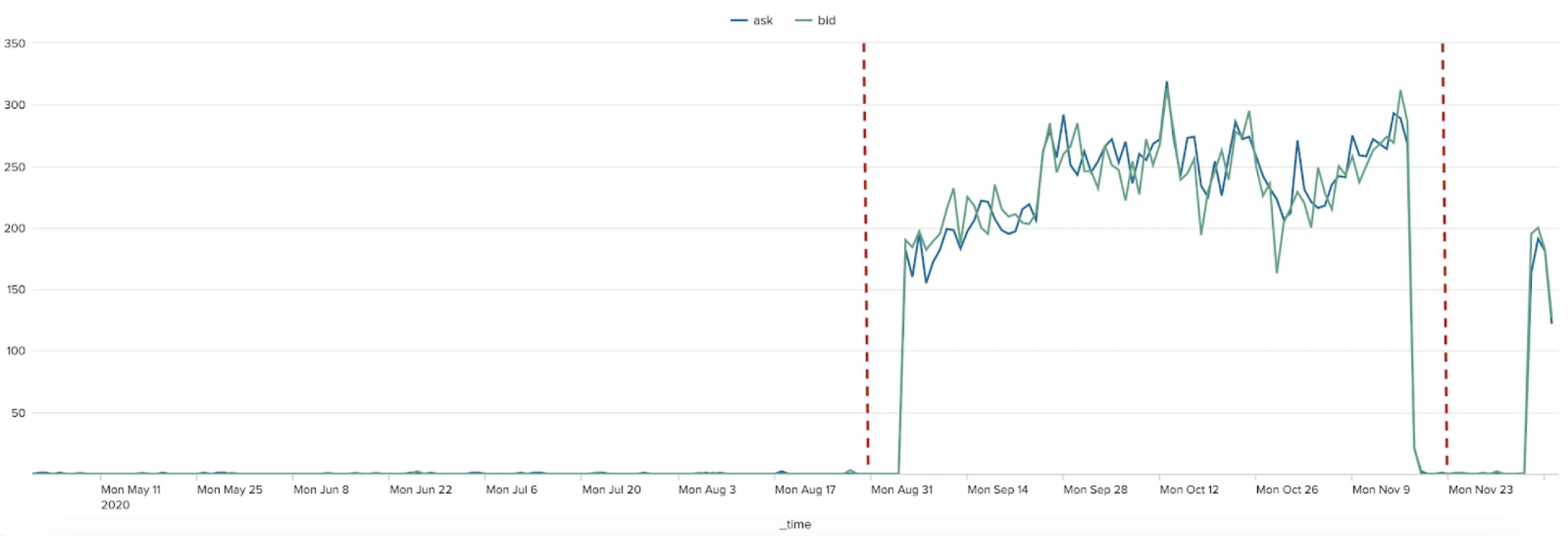
Subsequent analysis found that bids and asks for exactly 0.4 ETH were being published concurrently. This trading pattern lasted for about 3 months, starting with a sharp increase and ending with an instant decline.
This wash trading hypothesis is also supported by average transaction size deviations and Inca Digital Inflated Volume Score spikes, which show outstanding trade volumes executed at suspiciously low volatility periods. This is a commonly observed scenario for the way exchanges demonstrate fake activity.

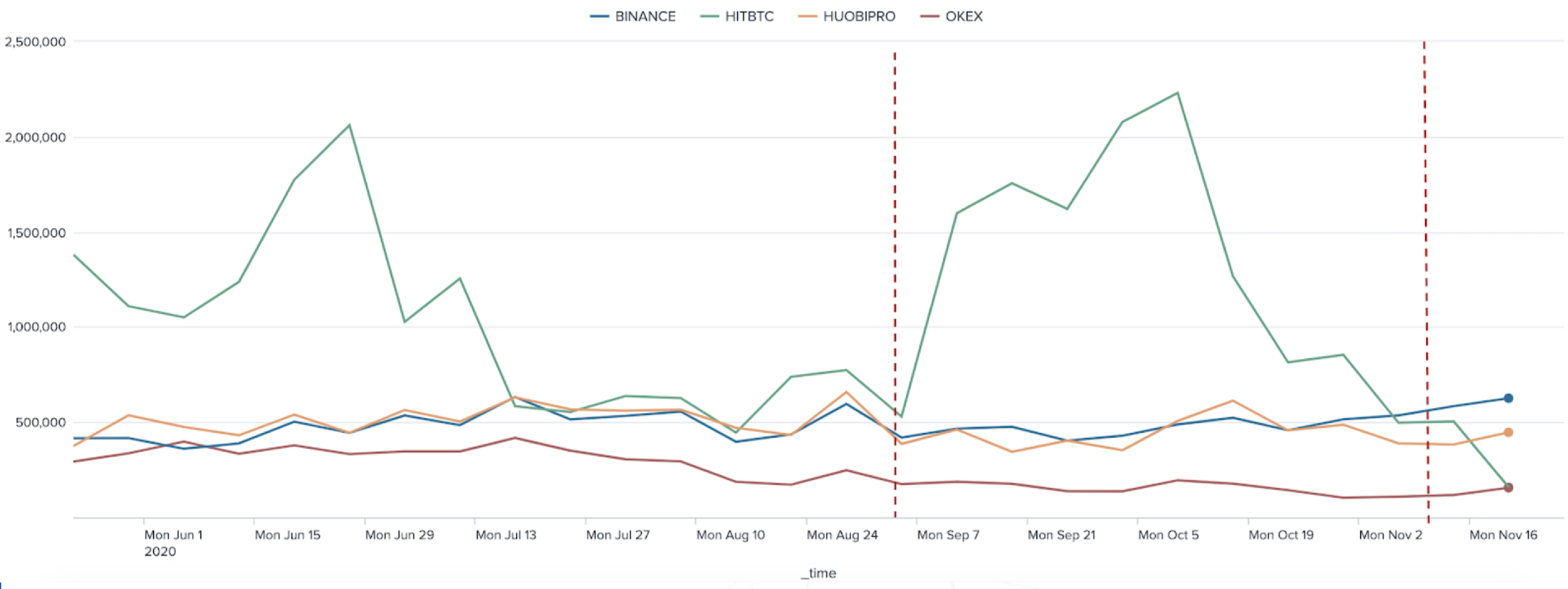
All said above proves the manipulative nature of the average transaction size deviation on HitBTC exchange.
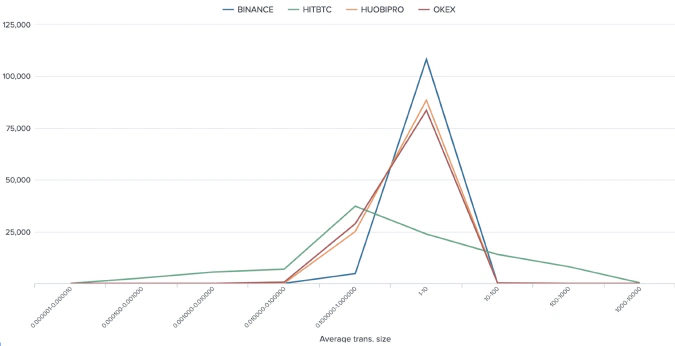
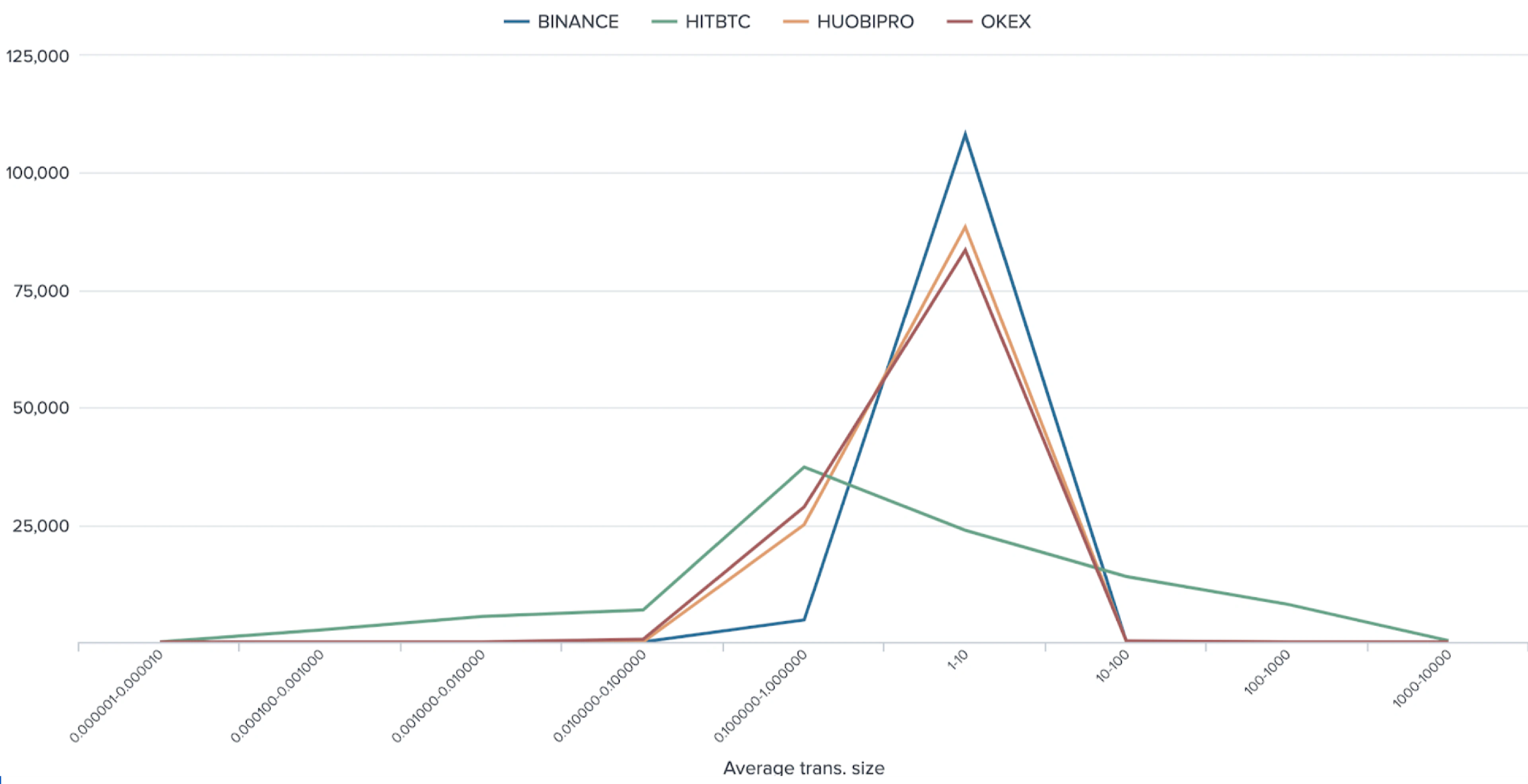
Suspicious rounded trades on Huobi
The Huobi exchange shows suspicious distribution of trades by their degree of rounding. Trades with at most 2 significant digits prevail suspiciously and contradict the common trend amid other exchanges. The same could be said about HitBTC — the anomalous spike appears within 4 significant digits.

